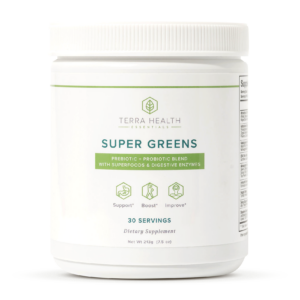About 1 in 5 people around the world are living with chronic pain and this has led to a growing amount of research into finding a solution. Many prescribed medications and treatments such as nerve blocks leave people dealing with extra side effects in addition to their base level of pain. As a result, both pain patients and practitioners have started to take a more integrative approach and look into the impact of diet and lifestyle changes on chronic pain management. But can simply changing your diet change how much pain you’re in on a daily basis?
So what is inflammation what connects it to chronic pain?
What is Inflammation?
Inflammation is a result of your body defending itself against injury and disease. When confronted with toxins, your immune system will go into overdrive and this is when inflammation occurs. This installation is usually a reaction to something like a bruise or an acute injury and will naturally disappear once your body has healed. But there’s a bit of a good cop/bad cop thing going on here too. Sometimes your body doesn’t “switch off” this reaction after it has healed. Instead, it stays in “crisis mode and the inflammation becomes chronic. When this happens it can affect every aspect of your health and lead to chronic pain and diseases such as diabetes, heart disease, Alzheimer’s, strokes, and depression.
How to Stop Feeding Your Pain
There is growing evidence to suggest that switching to an anti-inflammatory diet can help to relieve chronic pain. Rather than being a specific food plan, an anti-inflammatory diet offers guidance for people who want to avoid foods that may create or exacerbate inflammation in their bodies.
 For some people, especially those dealing with an extreme level of pain, it can be difficult to imagine that something as simple as changing what they eat could help to reduce their pain levels. But this is a great option for anyone who suffers from chronic pain and wants to either support their existing medications or wean off any medications can they feel are causing too many side effects with no improvement (only after consulting with a physician). When an integrative treatment plan including an anti-inflammatory diet, natural supplements for joint pain relief, increased exercise, and stress reduction is applied, the side effects of some medications are no longer an issue. Whilst there is no magic food that can cure chronic pain, the right combination of anti-inflammatory foods can often provide notable positive results.
For some people, especially those dealing with an extreme level of pain, it can be difficult to imagine that something as simple as changing what they eat could help to reduce their pain levels. But this is a great option for anyone who suffers from chronic pain and wants to either support their existing medications or wean off any medications can they feel are causing too many side effects with no improvement (only after consulting with a physician). When an integrative treatment plan including an anti-inflammatory diet, natural supplements for joint pain relief, increased exercise, and stress reduction is applied, the side effects of some medications are no longer an issue. Whilst there is no magic food that can cure chronic pain, the right combination of anti-inflammatory foods can often provide notable positive results.
Dietary Changes
In its most basic sense, treating your chronic pain with an anti-inflammatory diet means cutting out inflammatory foods and replacing them with anti-inflammatory options. The struggle that many people have is sticking to this, as it can feel quite restrictive until you get used to it, especially when these are foods that you’ve eaten all your life. But the key is to remember that this isn’t simply a diet, it’s a complete lifestyle overhaul and a possible solution to managing your pain in the long term.
 The staple of the anti-inflammatory pain management diet is based on the Mediterranean diet which includes green vegetables, fish, salads, lean meat, eggs, shellfish, cheese, fowl, olive oil, and red wine (in moderation!). Research on the Mediterranean diet has actually proven it can reduce the risk of heart and liver disease and cure metabolic syndrome. In addition, it can reduce inflammation, which is often the main culprit behind chronic pain. The main foods that cause inflammation such as refined carbs, dairy, added sugars, processed and red meat, fried food and soda, are not key components of this diet. Instead, it tends to include more anti-inflammatory foods such as cruciferous vegetables, fruits, nuts, beans, fatty fish, olive oil, and various herbs and spices such as ginger and turmeric.
The staple of the anti-inflammatory pain management diet is based on the Mediterranean diet which includes green vegetables, fish, salads, lean meat, eggs, shellfish, cheese, fowl, olive oil, and red wine (in moderation!). Research on the Mediterranean diet has actually proven it can reduce the risk of heart and liver disease and cure metabolic syndrome. In addition, it can reduce inflammation, which is often the main culprit behind chronic pain. The main foods that cause inflammation such as refined carbs, dairy, added sugars, processed and red meat, fried food and soda, are not key components of this diet. Instead, it tends to include more anti-inflammatory foods such as cruciferous vegetables, fruits, nuts, beans, fatty fish, olive oil, and various herbs and spices such as ginger and turmeric.
6 Basic Guidelines for an Anti-Inflammatory Diet
- Have eight to nine servings of fruits and vegetables daily and opt for cruciferous vegetables such as cabbage, broccoli, and Brussels sprouts.
- Limit your intake of dairy products and cut out simple carbohydrates. Instead, go for whole grains such as oats, brown rice, spelt, quinoa, buckwheat, and barley which will give you the vitamins, fiber, and protein you need.
- Cut out red meat and opt for fish or vegetarian main meals instead. Chicken is also an option. On this diet you should only eat red meat once or twice a year on special occasions.
- Incorporate spices and herbs to your diet. These contain antioxidants which can help to reduce inflammation. Turmeric, in particular, contains an active chemical called curcumin which is proven to be anti-inflammatory and especially helpful for people suffering from rheumatoid arthritis.
- Maintain an ideal weight for your height. Obesity itself is considered a low-grade inflammatory disease, so getting down to a healthy weight will help your body to heal. You will find that this naturally occurs in sync with adopting an anti-inflammatory diet, but it’s also important to maintain an active lifestyle and exercise regularly for best results.
- Add Digestive Supplements to your diet so that your body continues to get the key nutrients it needs.
Progress Takes Time: Don’t Be Too Hard on Yourself
 Big lifestyle changes like this are not easy to make. If you’re used to a certain diet and your pain levels have made you increasingly sedentary, it will require a lot of willpower and effort to maintain this diet and a more active lifestyle. And that’s okay! The important thing is that you keep going, even when you have a slip-up now and then.
Big lifestyle changes like this are not easy to make. If you’re used to a certain diet and your pain levels have made you increasingly sedentary, it will require a lot of willpower and effort to maintain this diet and a more active lifestyle. And that’s okay! The important thing is that you keep going, even when you have a slip-up now and then.
Remember, you’re playing the long game here and any small change you make toward helping you take control of your pain is a step in the right direction. If you’re finding the dietary changes particularly difficult, try incorporating them step by step, i.e. start by cutting down on meat and then move on to refined carbohydrates. In terms of activity, just going for a walk each day is a start.
The most important thing here is to be patient. It can take up to 3 months to see any changes in your pain levels after adopting an anti-inflammatory diet and this leads many people to quit because it’s “not working” after just a week or two. But the reality is that your general health will improve whether your pain reduces or not, so even if you’re a month in and you feel like your pain hasn’t reduced yet – stick with it because your overall well-being will still improve regardless.
Fast Relief From Joint Pain
 Adding our Super Greens supplement will help to significantly reduce your pain in combination with your new anti-inflammatory diet. Right now, all Terra Health Essentials readers can avail of a special 30% discount on Super Greens using the code jointpain30 when placing your order!
Adding our Super Greens supplement will help to significantly reduce your pain in combination with your new anti-inflammatory diet. Right now, all Terra Health Essentials readers can avail of a special 30% discount on Super Greens using the code jointpain30 when placing your order!
Order now to make sure you receive your discount and please don’t hesitate to contact us on Facebook if you have any questions or would like to discuss your treatment plan further.

